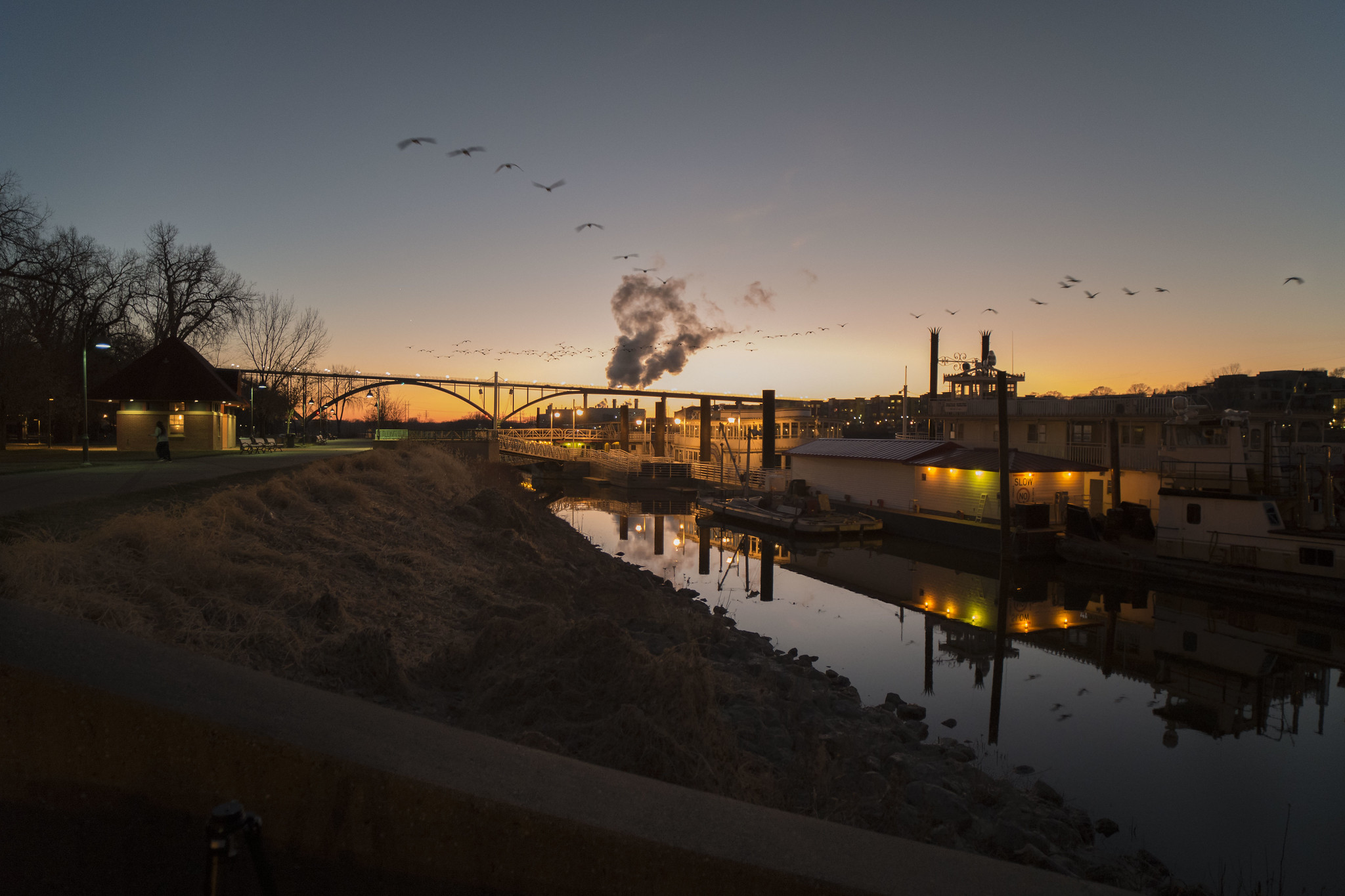What St. Paul's new riverfront rules should include

St. Paul has the opportunity to safeguard birds in new riverfront development. (Photo by Steve Cronin for FMR)
FMR has been involved for many years with St. Paul's planned adoption of its Mississippi River Corridor Critical Area (MRCCA) ordinance that will guide riverfront development. While we continue to be concerned about the city's unexplained years-long delay in completing its ordinance, we anticipate that the city council will likely vote on it in early 2024.
When this ordinance last came before the city's planning commission in January 2023 for public input, it included several vital provisions that we think should still be included in the final draft. However, in the months since, city leaders have been revising the draft ordinance. We don't know what they've changed — the three provisions we championed last winter could be off the table. When the draft is released, we'll be depending on our River Guardians to help advocate for the strongest version possible.
If included, the vital provisions below would make St. Paul's MRCCA ordinance clearer than any other metro riverfront city's.
Clarity around these rules will serve developers, community members and city leaders well by providing consistent and predictable development standards.
A strong ordinance also preserves equitable public access to and enjoyment of the riverfront for all, not just those fortunate enough to live right on its shores. The Mississippi River is the entire reason St. Paul was built where it was. The city's riverfront is scenic, ecologically sensitive, and — to the Dakota people — sacred.
Here's what we'll be looking for in St. Paul's final ordinance.
1) Bird-safe buildings
St. Paul residents, alongside Audubon Minnesota and the Saint Paul Audubon Society, have been enthusiastic about St. Paul's inclusion of science-based standards for bird-safe buildings for any new development in the river corridor.
St. Paul can balance urban density with wildlife protection by requiring bird-friendly lighting design, building design and building materials in all new development along the river.
Per Birdcast, as many as 50 million migratory birds pass through Ramsey County each season, mainly because of the Mississippi River flyway.
The risk of bird mortality from structures that are not intentionally designed to mitigate for birds is well-documented. Bird-glass collisions in the United States are estimated to cause as many as one billion bird deaths yearly. This has contributed to a 29% decline in North American bird populations since 1970.
We asked Greg Barnes, St. Paul Audubon Society's president, and Dr. Dale Gentry, Audubon Minnesota's conservation director, why bird-safe buildings matter. They said, "The Mississippi River Flyway is one of the most important bird migration corridors in North America. Bird-safe buildings help ensure safe passage through St. Paul for millions of birds whose populations are experiencing alarming declines."
2) Clear standards for exceptions
A good ordinance also includes a clear process for how exceptions (variances and conditional use permits) to the ordinance are requested, considered and granted. Common exceptions include requests by landowners for a building to be taller or closer to the shoreline or bluff's edge than would otherwise be allowed.
St. Paul's ordinance should include the Department of Natural Resources' recommended language regarding written findings of fact for these variances and conditional use permits.
In our experience, requested exceptions to these rules — especially in river areas beloved by the community — can be contentious and challenging for a planning commission and council. The DNR's recommended language about written findings offers more specific criteria for evaluating a request based on its impact on river resources and scenic views. This provides more clarity and predictability for all involved.
Nearly all of the 20 other cities that have completed their MRCCA ordinances have included this language (Ravenna Township and Anoka are the only exceptions we're aware of). And it's proven helpful to cities evaluating their first MRCCA variance and conditional use permit requests.
3) Tiered building heights
Building height limits vary widely throughout the critical area based on development patterns and riverfront characteristics. St. Paul's riverfront has some areas that require careful consideration about how to balance future development needs and protection of scenic views to and from the river.
The river gorge through St. Paul (the only gorge on the entire Mississippi) is a tremendous scenic resource. In places along the gorge, it's still possible to look out over the river and see almost no humanmade development. Well-managed building heights can protect those rare natural views for everyone to enjoy from parks and other public spaces.
Tiering building heights away from the river can also encourage additional river-oriented development by ensuring an entire neighborhood is designed with the big picture in mind. Areas closest to the shoreline should have slightly shorter buildings so that buildings farther back can also enjoy river views; this encourages more developers to orient their projects towards the river and increases the appeal of those buildings.
The Department of Natural Resources requires tiered building heights. But cities can decide how to actualize that requirement in the ordinance. St. Paul's January 2023 draft ordinance allows more height the further a structure is from the shoreline. This is the simplest and clearest way to define standards that everyone can understand and apply.
Stay involved
When St. Paul's ordinance does come up for future votes at the planning commission and city council this fall and winter, we'll need our River Guardians ready to speak up for the river. Become a River Guardian today so you can protect our capital city's flyway, the river and our connection to it.
Become a River Guardian
Sign up and we'll email you when important river issues arise. We make it quick and easy to contact decision-makers. River Guardians are also invited to special social hours and other events about legislative and metro river corridor issues.